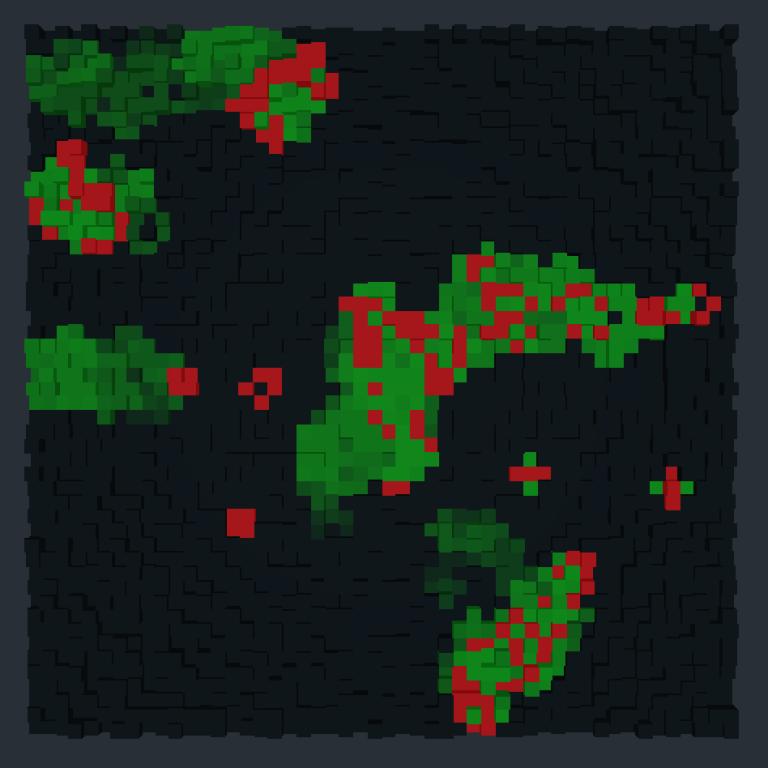

P., The quantum cellular automata as a Markov process, Chaos Soliton Fract. and Lewenstein M., Quantum games and quantum strategies, Phys. and Santha M., A decision procedure for well-formed unitary linear quantum cellular automata, SIAM J. and Han R., Entanglement playing a dominating role in quantum games, Phys. 2 (Academic Press, London, 1982).ĭu J., Xu X., Li H., Zhou X. K., Winning Ways for your Mathematical Plays, Vol. M., Comment on “Quantum games and quantum strategies,” Phys. M., Comment on “A quantum approach to static games of complete information,” Phys. Wolfram, S.: Universality and complexity in cellular automata.Benjamin S. Princeton University Press, Princeton (1987) Winfree, A.T.: When Time Breaks Down: The Three-Dimensional Dynamics of Electrochemical Waves and Cardiac Arrhythmias. Von Neumann, J.: The Theory of Self-reproducing Automata.
Conways game of life constructor software#
Tjardes, T., Neugebauer, E.: Sepsis research in the next millennium: concentrate on the software rather than the hardware. Theraulaz, G., Bonabeau, E.: A brief history of stigmergy.

Simon, H.A.: The Sciences of the Artificial, 3rd edn. Silver, S.: Personal communication (1998) Shante, V.K.S., Kirkpatrick S.: An introduction to percolation theory. Peterson, G.D., Allen, C.R., Holling, C.S.: Ecological resilience, biodiversity and scale. Sr., Bestelmeyer, B.T., Allen, C.D., Munson-McGee, S., Havstad, K.M.: Cross-scale interactions, nonlinearities, and forecasting catastrophic events. Pargellis, A.N.: The evolution of self-replicating computer organisms. Maynard Smith, J., Szathmáry, E.: The Major Transitions in Evolution.

Martin, W., Russell, M.J.: On the origins of cells: a hypothesis for the evolutionary transitions from abiotic geochemistry to chemoautotrophic prokaryotes, and from prokaryotes to nucleated cells. Langton, C.G.: Self-reproduction in cellular automata. Koonin, E.V., Martin, W.: On the origin of genomes and cells within inorganic compartments. Kauffman, S.A.: The Origins of Order: Self-organization and Selection in Evolution. Cambridge University Press, Cambridge (1996) (eds.) Global Change and Terrestrial Ecosystems, pp. 346–384. Holling, C.S., Peterson, F., Marples, P., Sendzimir, J., Redford, K., Gunderson, L., Lambert, D.: Self-organization in ecosystems: lumpy geometries, periodicities and morphologies. Hanson, J.E., Crutchfield, J.P.: Computational mechanics of cellular automata: an example. (eds.) Artificial Life VI: Proceedings of the Sixth International Conference on Artificial Life, pp. 104–113. In: Adami, C., Belew, R.K., Kitano, H., Taylor, C. Gotts, N.M., Callahan, P.B.: Emergent structures in sparse fields of Conway’s “Game of Life”. Gotts, N.M.: Ramifying feedback networks, cross-scale interactions, and emergent quasi individuals in Conway’s Game of Life. Studies in the Sciences of Complexity, pp. 1–53. (eds.) New Constructions in Cellular Automata. Gotts, N.M.: Self-organised construction in sparse random arrays of Conway’s Game of Life.

Gotts, N.M.: Emergent phenomena in large sparse random arrays of Conway’s “Game of Life”. Santa Fe Institute working paper 06-03-008 (2006) Gönerup, O., Crutchfield, J.P.: Hierarchical self-organization in the finitary process soup. Gardner, M.: Wheels, Life and Other Mathematical Amusements. Cambridge University Press, Cambridge (2000)įu, L.-L.: Interaction of mesoscale variability with large-scale waves in the Argentine basin. (ed.) Technological Innovation as an Evolutionary Process, pp. 248–266. E 51(4, Pt. A), 3032–3037 (1995)įleck, J.: Artefact activity: the coevolution of artefacts, knowledge and organization in technological innovation. 15(1), 1–40 (2004)ĭhar, A., Lakdawala, P., Mandal, G.: Role of initial conditions in the classification of the rule-space of cellular-automata dynamics. 107, 425–445 (2003)Ĭook, M.: Universality in elementary cellular automata. Wiley, New York (1997)Ĭhang, T., Tam, S.W.Y., Wu, C.-C., Consolini, G.: Complexity, forced and/or self-organised criticality, and topological phase transitions in space plasmas. 6, 1–43 (1982)Ĭasti, J.L.: Would-Be Worlds: How Simulation Is Changing the Frontiers of Science. Academic Press, San Diego (1982)īraga, G., Catteneo, G., Flocchini, P., Quaranta Vogliotti, Q.: Pattern growth in elementary cellular automata. Available from (1994)īerlekamp, E., Conway, J.H., Guy, R.: Winning Ways, vol. Oxford University Press, Oxford (1986)īell, D.I.: Highlife: an interesting variant of Life. Perseus, Cambridge (2002)īarrow, J.D., Tipler, F.J.: The Anthropic Cosmological Principle. Science 293, 1818–1820 (2001)īak, P., Chen, K., Creutz, M.: Self-organized criticality in the “Game of Life”.


 0 kommentar(er)
0 kommentar(er)
